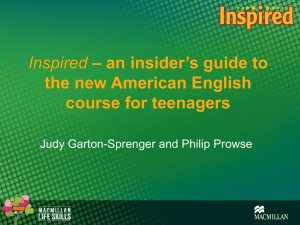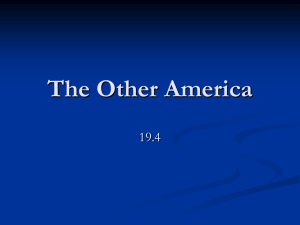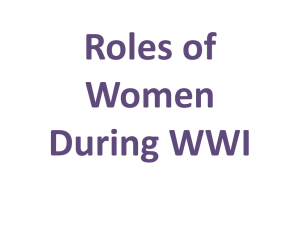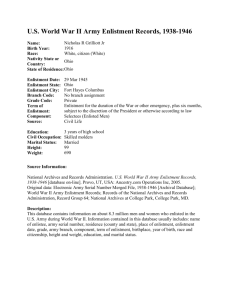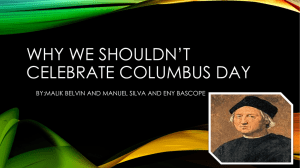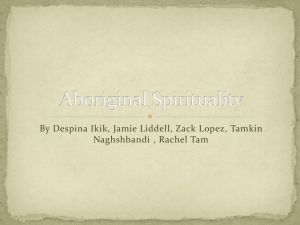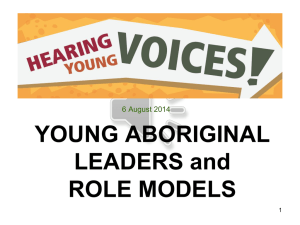Canada`s People Powerpoint
advertisement
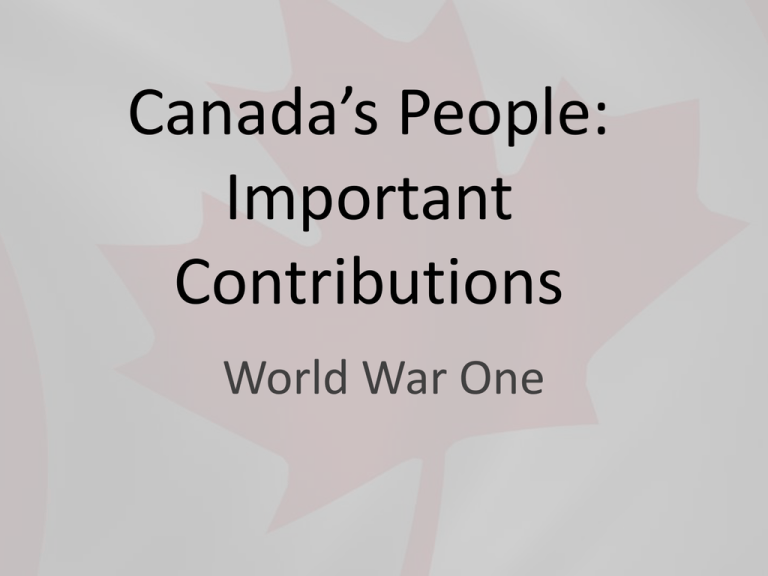
Canada’s People: Important Contributions World War One Native American • I in 3 able-bodied Canadian Native American men, of age to serve, enlisted during WWI. • The Canadian Government, headed by Prime Minister Robert Borden, had not expected that so many Aboriginal people would volunteer. • At first, it had hoped to discourage Native enlistment and initially adopted a policy of not allowing Indians to serve overseas. The policy stemmed from a belief that the enemy considered Natives to be "savage", and a fear that this stereotyped view would result in the inhumane treatment of any Aboriginal people who were taken prisoner.. Native Americans • When conscription was put into place in 1917 many Natives believed they should be exempt, honouring previous treaties which stated Natives would not have to fight on Britain’s behalf. • On a voluntary basis, however, Native enthusiasm for the war effort was evident across Canada. Some reserves were nearly depleted of young men. For example, only 3 men of the Algonquin of Golden Lake Band who were fit and who were of age to serve remained on their reserve. In British Columbia, the Head of the Lake Band saw every single man between the ages of 20 and 35 volunteer. African-Canadians • Despite the growing desperation for new recruits African-Canadians were heavily discouraged from enlisting. • Could only enlist if a local regime allowed them in. • George Morton wrote to the minister of militia “...a number of coloured men in this city who have offered for enlistment and service have been turned down...solely on the grounds of colour...this being the reason given on the rejection or refusal card...they think they should be permitted in common with other peoples to perform their part...” No. 2 Construction Battalion • 1916 finally African-Canadians allowed to form a corps but would not be allowed to fight. • Built trenches, railways, worked in lumber yards. • Very few African-Canadians were able to make there way to the front. Billy Bishop • Canada’s most successful pilot – credited with destroying 72 enemy planes. • At the height of battle in 1917 the average life expectancy of a pilot was only 10-15 days. • Bishop was a reckless pilot but had excellent sight and aim. Grace MacPherson • After losing her brother in the war, Grace was inspired to contribute to the war effort. • After making her way to France she was given the honourary title Lieutenant in the Voluntary Aid Detachment. She would work as an ambulance driver. • Risked her life numerous times travelling to the front to fetch wounded soldiers. John McCrae • Author of the famous In Flanders’ Field. • Was given rank of Major in WWI where he worked as a surgeon. • Poem was inspired by friend lost in battle. • It was his poem that inspired the wearing of the poppy – a tradition held all over the world. • Died of pneumonia and meningitis while serving in France.

